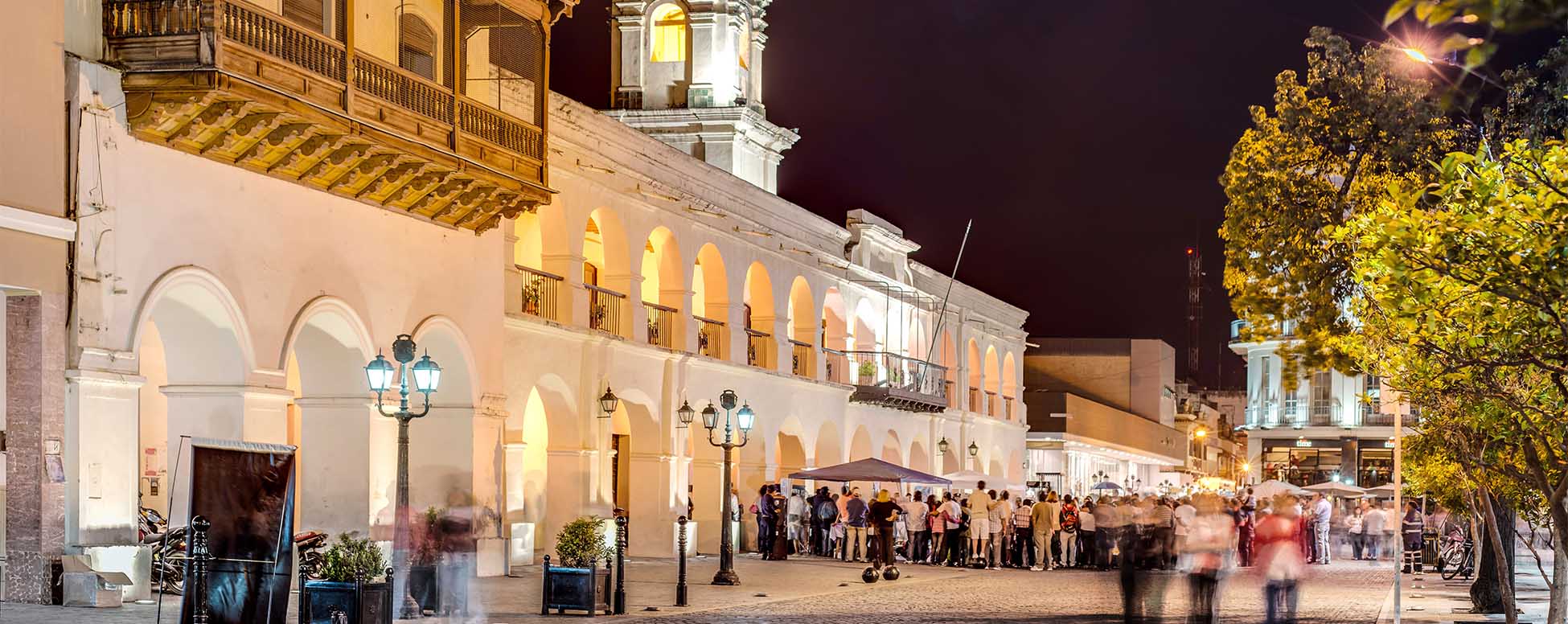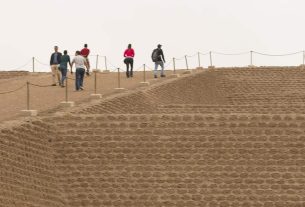Salta is the capital of the Argentine state of the same name, a medium-sized city with about 500,000 inhabitants. It is near the Andes Mountains, in a place called Vale de Lerma. A beautiful town, surrounded by mountains. So, bora find out what to do in Salta – and convince you to pack your bags and run there?
In this text you will find tips of the main attractions in Salta, what to do, where to stay, when to go, walks in the surroundings and much more.
See also:
Travel Tips for Salta and Jujuy
15 reasons to visit the north of Argentina
Itineraries traveling in the North of Argentina
How to get to Salta, Argentina
There are no direct flights to Salta from Brazil. To get there by air, you need to make a connection in Buenos Aires and then take a new flight to the airport of Salta, on a trip that lasts 2h10.
By bus
From Buenos Aires, the trip to Salta takes more than 20 hours and the price of tickets is usually not much cheaper than those by plane. It is over 1500 kilometers of road.
It is worth opting for land travel if you want to explore other regions of the country, dividing the route into smaller stretches. Cordoba, for example, is in the middle of the way and is an interesting pit-stop.
See also: How to travel by bus through Argentina
How many days to stay in Salta
Salta is small and it is possible to walk through its main sights in one or two days. The city, however, is a great base for getting to know the north of the country. Get ready to make lots of trips back to places nearby – and not so close – like Cachi, Cafayate, Salinas Grandes and, for the liveliest, the Huamahuaca Quebrada.
Therefore, it is best to plan a stay between five days and one week.
Best time to go to Salta
Salta can be visited at any time of the year without major problems. The only climate inconvenience you will have to deal with will be the dryness of winter, which can bother the most allergic.
In the summer, the average temperature is about 20oC. In winter it makes a cold, with doctor of 10oC. The rains are concentrated between December and March, but are more common in the mountains than in the city itself, which ends up favoring the view.
Travel insurance to Argentina
Travel insurance is optional for Argentina, but our recommendation is that you never travel without, because in the case of any medical emergency, theft, loss of luggage or need to interrupt the trip because of some great unforeseen event, you will be protected.
To quote your insurance, we recommend Insurance Promo, a search engine that compares the best prices and coverages in the market and helps you find the best value for money for your trip. Click here to find out how to spend less than $10 per day and ensure a discount coupon for blog readers or use the box below:
Things to Do in Salta: The Main Attractions
It all revolves around a date: July 9. In Argentina, parks, streets, squares and avenues were named after Independence Day. In Salta it is no different. This is the name of the square that functions as the heart of the city.
This is where the Cabildo, seat of municipal power during colonization, are located. Also in this square is the Cathedral of Salta, built in the 19th century and that keeps the ashes of General Martín Miguel de G?emes, one of the heroes of the country’s independence, as well as several bars and restaurants, many of them occupying historical mansions.
Here is the great charm of Salta: it is a colonial city. It was founded in 1582 and remained important for centuries, due to its proximity to Bolivia and Chile. After the independence of Argentina in the early 19th century, Salta fell oblivion. Until the tourists arrive.
Speaking of them, almost all of them are on the outskirts of Julius Square 9. This is one of the best areas of the city to stay in.
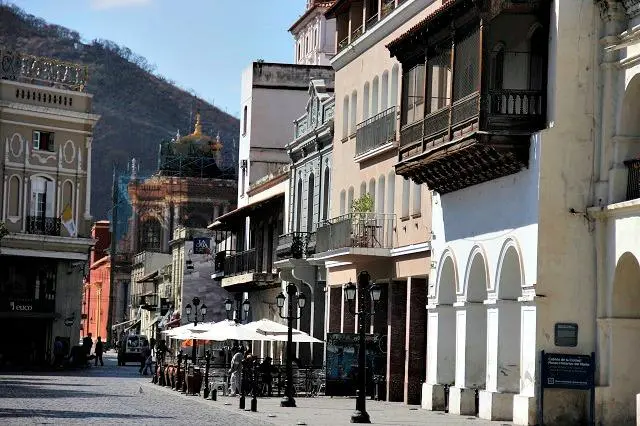
Praça 9 de Júlio also one of the biggest attractions of Salta (at least it was my favorite). It is the Museo de Arqueología Alta Montana, which talks about the Inca culture and tells the story of the sacrifice of children, a very common practice in that region.
As these sacrifices took place in some of the highest mountains in the world, the bodies of these children were preserved by eternal ice. Rescued in 1999, the three Mmias Llullaillaco are displayed there, one at a time, in a relay that occurs every six months.
Another two prominent museums in Salta are the Museum of American Ethnic Art, focused on indigenous art and culture and that is close to the train station, and the Museo Histórico del Norte, also on pre-Columbian art and which operates in the building of Cabildo, in Praça 9 de Julio.
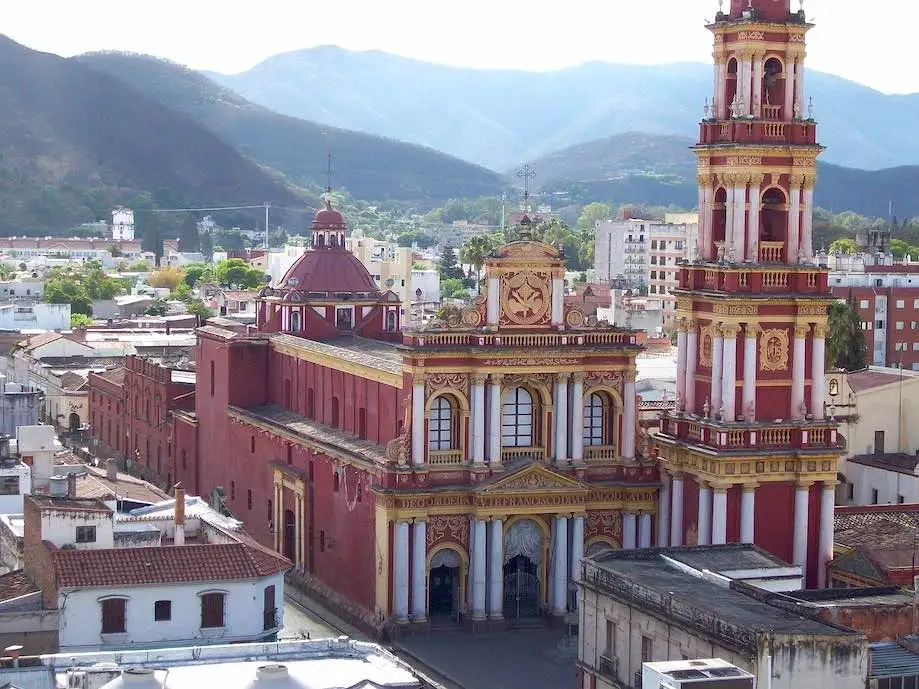
If Salta is a colonial city, it has churches. Many. We even talked about the city Cathedral here, which is part of the day to day of the saute. But the most beautiful Church in the city is the San Francisco Church, which was unfortunately closed for renovation when we were in the city. The facade shows the beauty of the building.
Iglesia San Francisco is two blocks from 9 Julio Square. To get there, just follow the street Caseros. Once in front of the Church, follow for another three blocks on the same street and you will arrive at the Convent of San Bernardo. To enter through these gates, only if you become a Carmelite nun. The convent church is open for visitation during Mass.
- Cable Car of San Martin Park
From the convent, we turn at Calle Santa Fe. I advise you to do the same. Just walk another three blocks to get to San Martín Park, a large green area in downtown Salta. We stop at a fair and spend time taking pictures of the people sausage, but if you want you can run right away to the entrance of the cable car. The trip leads to Cerro San Bernardo, a hill that is behind Salta and overlooks the whole city. The ticket costs 330 pesos (in Feb/2020).
At the top of Cerro there are gardens, souvenir shops, waterfalls and, of course, the viewpoint. You can also get up there by car or on foot.
- Things to do in Salta at night
The tip is right: look for the people. These bars that play local music are a unique and typical experience of northern Argentina. Wearing traditional clothes and instruments from the region, musicians fill the city’s bars with joy and the party is always watered with a lot of food and drink.
There are many people who say that this is an even more typical Argentine demonstration than tango, because it is inherited from the original inhabitants of those lands, the Quechua indigenous people.
And, perhaps because it is the most touristic city in the north of Argentina, the colonial Salta has dozens of pe?as, definitely the most interesting program to do in the night of the city. Some recommended bars are:
Things to do near Salta
If you have accompanied me here, you realized that Salta is a friendly city, but that yields two days of travel, at the most. Have you passed that time? It is time to do the tours around Salta. You spend all day out, but go back to town to sleep. Toast, you have a chance to enjoy another night jumper.
There are two ways to do these tours: you can hire a tour agency and go on a traditional tour. And you can also go on your own, whether it’s public transportation (most complicated option) or renting a car. This is an alternative to part of them, especially if you are in a group of three or four people.
If you choose to do so, we will indicate RentCars, which you are looking among the main landlords and helps you find the best prices and rental conditions.
But not everyone wants or can drive in another country. In our case, we were without a driver’s license. The advantage of hiring an agency tour is not having to worry about logistics, the road or the entrance to the attractions: the packages are all closed and you only have the job to wait for the van at your hotel door.
Here is a good list of tours and agencies for you to choose from. Take a look at the selection below:
- the National Park los Cardones
The back to Cachi, passing by the famous Cuesta del Obispo road, one of the most beautiful in the country, and the fantastic , is what involves shorter distances from Salta. But since the route requires climbing about 2,000 meters, prepare to spend a good time inside the bus (and to chew coca). It’s worth it.
Read our full post about Cachi and the National Park los Cardones
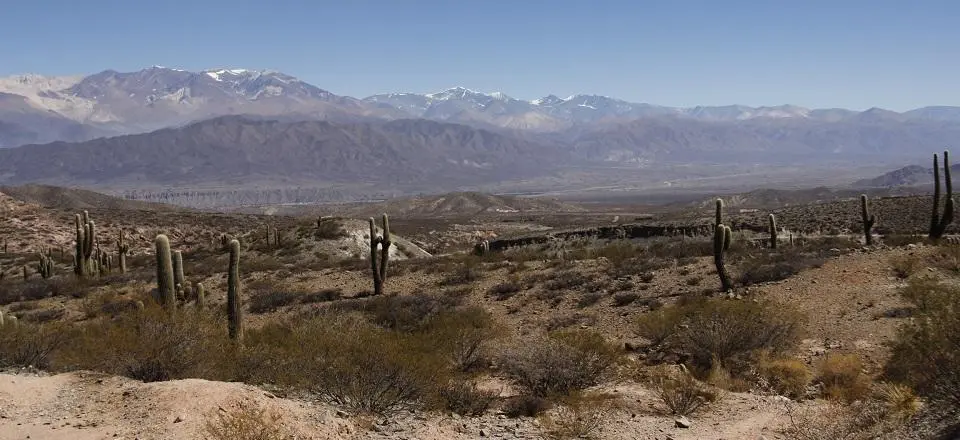
The Cuesta del Obispo received its name in honor of Bishop Julián de Cortázar, who in 1622 made this same trip and ended up having to stay there. Take the route calmly, stop at strategic points to ensure photos of the stunning landscape around. The Capilla San Rafael, which is close to the highest point of the tour (3348 meters), is the best viewpoint in the region.
On the road, artisans sell some travel souvenirs, snacks and coca leaves for chewing. You should need them, since the altitude rises quickly.
In September, the road fills with pilgrims to the Fiesta de Se?or y Virgen del Milagro, which takes place every year, on the 15th. At that time, inhabitants of the villages of the region descend in procession to Salta to participate in the apex of the celebration in the city’s Mother Church.
Ladeira below, the next stop is the Los Cardones National Park, an environmental protection area that has hardly changed in the last 500 years. There, the vegetation is composed of such cardones, a typical species of cactus of this part of South America. Some of the cards come within 400 years of life! They grow between 1 and 5 centimeters per year and can reach impressive heights.
Be sure to also check out the Recta del TinTin, a perfectly straight road traced by the Incas, cutting through the National Park.
Admission to the park is free. Inside, there are viewpoints and a trail through the cardones, with explanatory signs that tell more about the vegetation of the place and the life of the cacti.
Founded in the 16th century and surrounded by peaks of more than 5,000 meters, Cachi is a friendly Andean village with that air that takes us to the past. There is not much to see there besides enjoying the tranquil atmosphere of the interior.
Take a walk through the Central Square and take a look at the Church, visit the Pablo Díaz Archaeological Museum (recommended) and walk the alleys with historic buildings.
It’s also a good lunch there! Several restaurants offer typical food in northwestern Argentina at very inviting prices.
The trip to Cafayate, a village of 11,000 inhabitants famous for wine production, involves a greater distance: 180 kilometers to go and the same to return. Luckily, in the middle of the way is the Quebrada das Conchas, which yields several stops, as well as fantastic scenarios and photos.
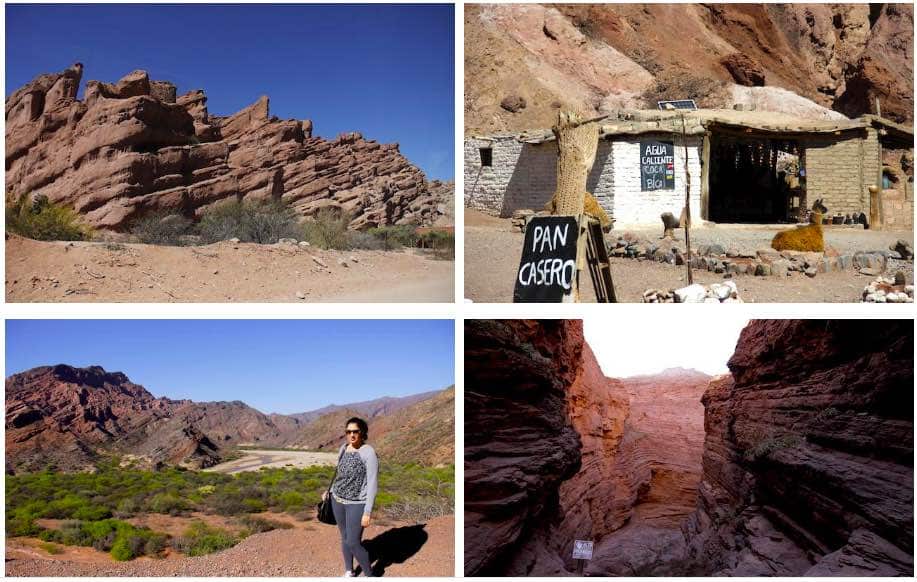
The region gets its name because there, in the past, an ocean passed. And to this day it is possible to find conchainhas encrusted in the rocks. Because of its mountains of strong colors and curious shapes amidst a raw and rather arid landscape, this is also considered one of the most striking roads in the country.
Some points that are worth a stop to stretch the feathers are the Garganta del Diablo, Tres Cruces and El Sapo.
Charming and quiet, Cafayate is another excellent stop to enjoy the Andean lifestyle.
Those who go there usually take the opportunity to visit a winery and taste one and another glass of wine. The city is the second center of excellence in wine in Argentina, second only to the famous Mendoza.
There are several wineries scattered to the region and even within the city, as well as excellent restaurants that serve the best dishes of Andean food. Read more in the full text about Cafayate and the Quebrada das Conchas.
This tourist train leaves Salta and passes through several tunnels and the iconic La Povorilla bridge, a stretch in which the altitude reaches 4 thousand meters! It is not uncommon for passengers to see clouds below the train. Finally, a walk to remember for the rest of your life. You can read more about the Tren de las Nubes here.
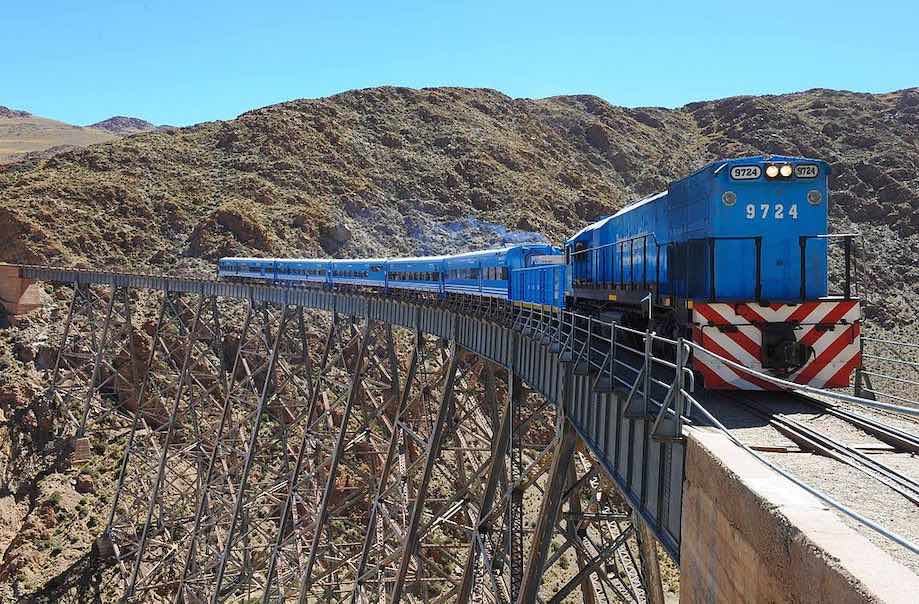
The train leaves from the station of San Antonio de los Cobres at 11:45 a.m., every day.
It is possible to buy only train tickets, without transfer from Salta, for $ 3,250 Argentine pesos in 2020 (53 dollars), or hire a tour that includes transportation of Salta, fast stop in the mining village of San Antonio des Cobres and meals. If you opt for the first option, remember that San Antonio de los Cobres is 100 miles from Salta, which gives you a 3 hour drive.
For those who prefer the complete package, it is possible to hire the tour in advance through this page.
A common script sold among Salta agencies is what leads to Salinas Grandes and Purmamarca, in the neighboring state of Jujuy, on the same day. If you have little time, it is worth taking this tour. However, the distances from Salta are great: you will face about 4 hours inside the van on the back stretch.
If you have more time, it is best to fit Salinas Grandes and Purmamarca with other destinations of Jujuy (read about the village and the Cerro de Siete Colores here). In this case, the best base to explore the region is the city of Tilcara, because of the location, atmosphere and tourist infrastructure.
But since this is not possible for everyone, it is worth cheering up and facing the road to Salinas Grandes on the outskirts of Salta, especially if you have never visited another desert of salt before. Here are some tours that you can hire in advance.
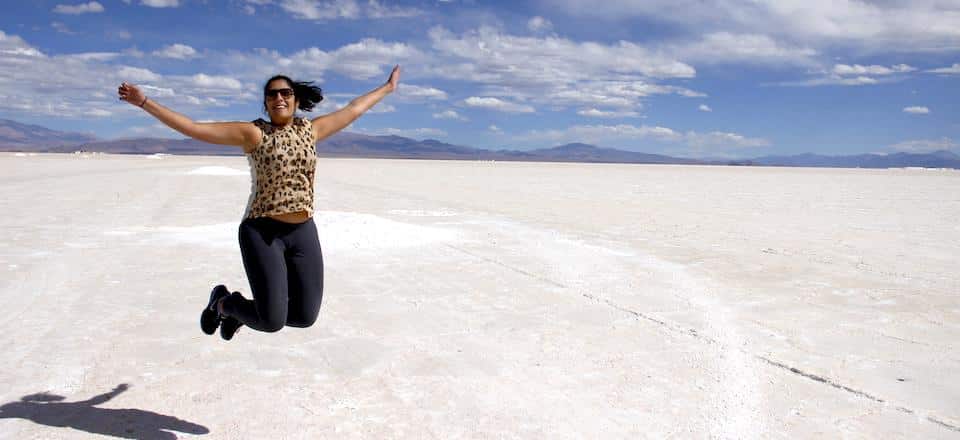
Arriving at the Salar, you can circulate around the area and take those photos in perspective. It’s time to unleash creativity, as clicks are very fun. Just remember to take it easy. You will be at high altitude and may feel bad. In general, tour guides provide coca leaves to chew, but you can buy them in any market in the region, as well as teas and candies made from the leaves.
In the middle of the Salinas there are some clippings full of turquoise water made in the salt crust. They are used to extract salt, which is still a source of income from several families in the region.
See also: Where to stay in the Quebrada de Humahuaca
Where to eat in Salta: restaurants
- Do?a Salta: One of the most highly rated typical food restaurants in the region, serves a delicious Cazuela de Cabrito and other iconic dishes of the Andean north. Be sure to ask for the renowned north-entry empanadas. Calle Cordoba 46.
- La Criollita: The northern empanadas are considered the best in Argentina, and La Criollita specializes in them. Considered by many the best in the city, it has a variety of fillings to choose from and dry and crunchy dough. Calle Zuviría 306.
- El Charrúa: Specializing in meats, it is a traditional restaurant in the city and is right in Paseo Goemes. Serves delicious cuts with fair prices. Gral. Grail. Martin Gemes 186.
- Aires Caseros: Simple restaurant, which serves tasty regional food and abundant with inviting prices. Also good for breakfast Calle Buenos Aires 11
Where to stay in Salta: recommended hotels
Look for accommodation in the center, this is where the main restaurants, shops, bars and historical buildings of the city are located. The best location is on the outskirts of Plaza 9 de Julio. For more information, also read the full text with tips on Where to stay in Salta: best hotels and regions.

Sign up for our newsletter and stay up to date with exclusive news
that can transform your routine!
Warning: Undefined array key "title" in /home/storelat/public_html/wp-content/plugins/link-whisper-premium/templates/frontend/related-posts.php on line 12
Warning: Undefined array key "title_tag" in /home/storelat/public_html/wp-content/plugins/link-whisper-premium/templates/frontend/related-posts.php on line 13

